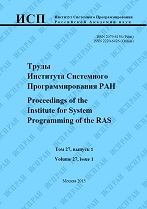|
Numerical simulation of indoor microclimate using free software
A. A. Tsynaevaa, E. A. Tsynaevaab
a Samara State Technical University
b Ulyanovsk State University
Abstract:
The work is devoted to the numerical study of indoor microclimate. Accurately predicting the distributed microclimate inside the residential space equipped with a microclimate control system called the «smart house» allows to save thermal energy significantly. Mathematical modeling was carried out by means of the Navier-Stokes equation, the energy equation, the continuity equation. The system of equations used was closed using the k-w-sst turbulence model. The resulting numerical solution was performed in the Code_Saturn, which has a free license. The Salome free software package was used to build a grid. In this context, a second–order scheme (SOLU) was used to resolve the velocity field, a MULTIGRID scheme was used for the pressure field, automatic settings were used for the kinetic energy of turbulence and her dissipation and for the temperature field, the maximum number of iterations for each cycle was equal to 10000, the Solver Precision accuracy was 10-8. The SIMPLEC algorithm is used to obtain a connected solution of the momentum balance and continuity equations. The paper provides an example of numerical solution verification, which is showed the relative temperature deviation from the values obtained by other authors was no more than 0.8-1.2%. Numerical simulation of the air velocity field in the residential space showed values from 0.12 to 0.15 m/s. Based on the results of the obtained solution, an analysis of the saving of thermal energy was carried out when regulating the supply of heat.
Keywords:
free software, mathematical modeling, indoor microclimate, smart home, model verification, energy saving.
Citation:
A. A. Tsynaeva, E. A. Tsynaeva, “Numerical simulation of indoor microclimate using free software”, Proceedings of ISP RAS, 33:5 (2021), 259–270
Linking options:
https://www.mathnet.ru/eng/tisp640 https://www.mathnet.ru/eng/tisp/v33/i5/p259
|

| Statistics & downloads: |
| Abstract page: | 19 | | Full-text PDF : | 12 |
|




 Contact us:
Contact us: Terms of Use
Terms of Use
 Registration to the website
Registration to the website Logotypes
Logotypes








 Citation in format
Citation in format 